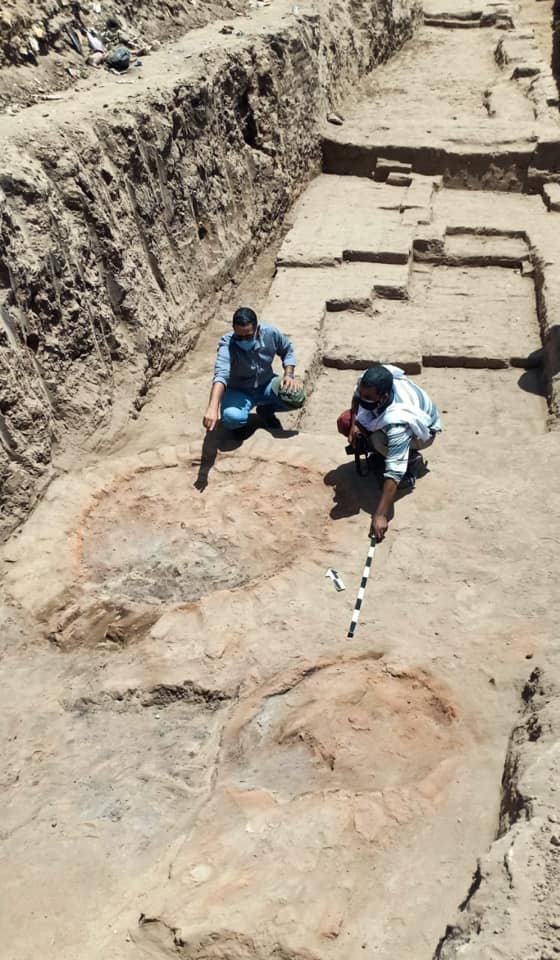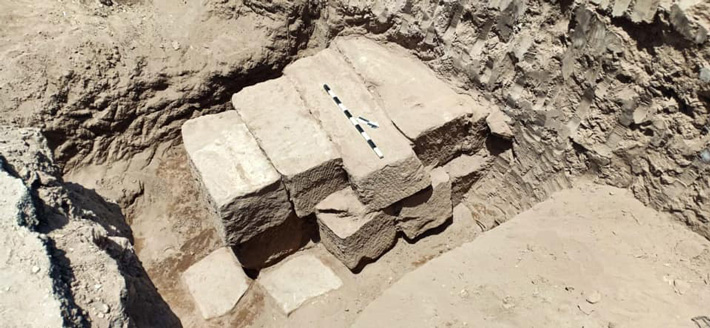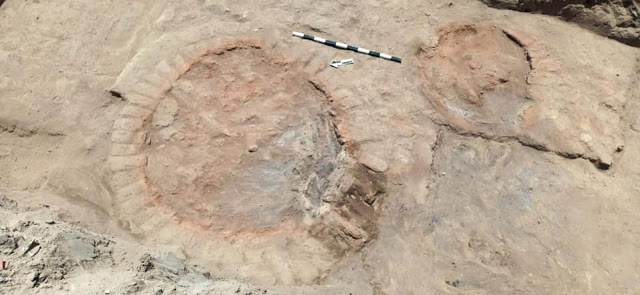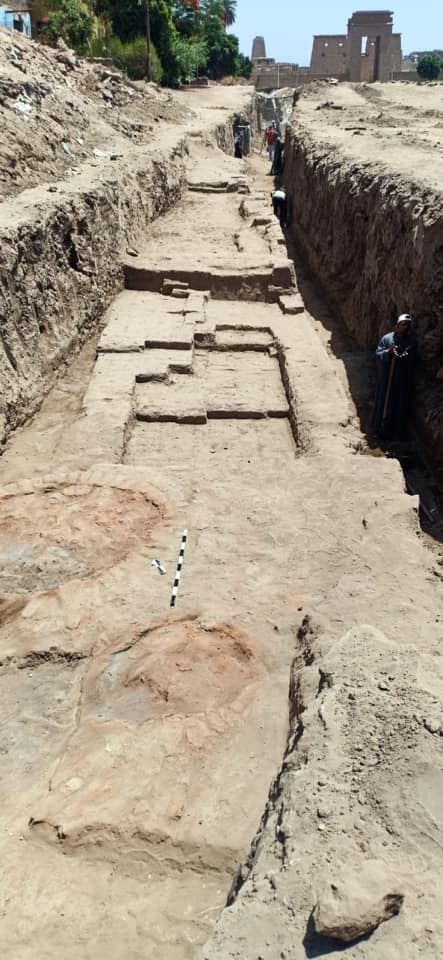Roman Ovens, Late Period Wall Discovered In Luxor
LUXOR, EGYPT—According to an Ahram Online report, several structures were uncovered during an excavation at the Avenue of Sphinxes, a ceremonial passageway lined with ram-headed sculptures that once connected temples in Luxor and Karnak.

Mudbrick kilns dating to the Roman period (30 B.C.–A.D. 640) are thought to have been used to fire pottery. A wall dated to the Egyptian Late Period (712–332 B.C.)
The Egyptian archaeological mission revealed during the works of the project to restore and revive the major historical road known as the Rams Road, a number of round ovens for burning mud-brick with burning marks, and a huge wall of mud bricks from the Roman and Late Periods.
Dr.. Mustafa Waziri, Secretary-General of the Supreme Council of Antiquities, said that these furnaces and fences were found in the Nag Abu Asbah area, and perhaps the furnaces were used in the manufacture of pottery or faience.
As for the wall, it was found west of the procession road of the Temple of Khonsu, about 30 meters high and two and a half meters wide and 3 wide Meters, and consists of 17 courses of mud bricks.
The mission also found a wall that was built from 3 sandstone blocks, which is an extension of the wall that was protecting the eastern bank of the Nile from changing levels of the Nile River during seasons of flooding and burning.
This wall extends from the front of Karnak Temple in the north to Luxor Temple in the south alongside The Great Procession Road is about 3 kilometers long.
Dr. Waziri agreed that the work team has taken all necessary measures to prevent and protect from the new Coronavirus, during the explorations, as all of the project workers are wearing masks and taking social spaces in the course of drilling.
It is worth noting that the excavation work in various areas of the Rams road has been ongoing since 2017 in order to unveil all the rams in it within the framework of the road rehabilitation project, in preparation for its opening soon.








